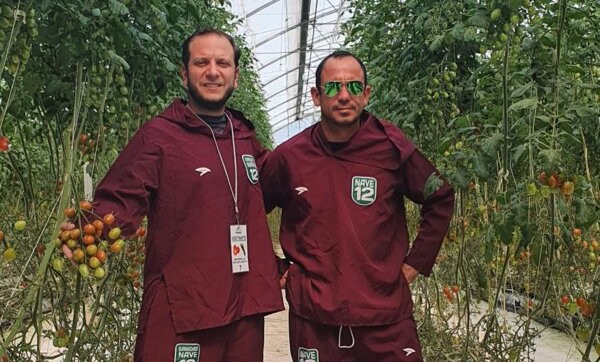Tomatoes can convert a lot of light into production but are also easily affected by heat. This is the reason why Hortalizas Argaman is using the heat reflecting ReduHeat coating. The farm is located in Poncitlan in the Jalisco region in the centre of Mexico and produces tomatoes, sweet peppers and cucumbers year-round in 20 hectares (50 acres) of plastic greenhouses. The products are primarily shipped to the US and Canada.
Radiation levels are high throughout the year. ‘This is why we apply the coating as early as at the end of January. In the past, we used ReduSol, which reflects heat as well as light. But today we use ReduHeat to coat the greenhouse. This allows the light used by the plants for photosynthesis to pass through, but reflects heat radiation. This way we combine high production with heat protection,’ says Pablo Fernando Albarran Estrada, Head Grower at Hortalizas Argaman.

Heat results in growth problems
Sunlight consists of PAR light and infrared light. The first component supplies energy for photosynthesis and is therefore very useful. By contrast, the crop is unable to make use of infrared light. Its only effect is to heat up the greenhouse. To limit the heat inside the greenhouse, it is therefore better to reflect it.
‘When the greenhouse becomes too hot, this creates problems for the blooms and in severe cases the plant stops growing altogether. This is why doing nothing is not an option,’ says Albarran Estrada. ‘The coating makes a big difference. It reduces the temperature inside the greenhouse by two degrees, the blooms grow better and the bumblebees more actively pollinate the flowers. In general, we have better control over production.’
Improved production
All of this results in improved production and a longer period of production. Not only the crop benefits from the improved conditions. ‘Staff feel more comfortable and are able to work for longer periods of time,’ he says.
Albarran Estrada is satisfied with the coating and will be using it again in the coming season. The protection of the sidewalls with ReduSol will possibly be upgraded at that time as well. ‘Today, we apply the coatings manually, but in the future, we are aiming for mechanical application,’ he concludes.
For more information: ReduSystems
ReduSystems
+31(0)13 507 53 99
sales@redusystems.com
www.redusystems.com
